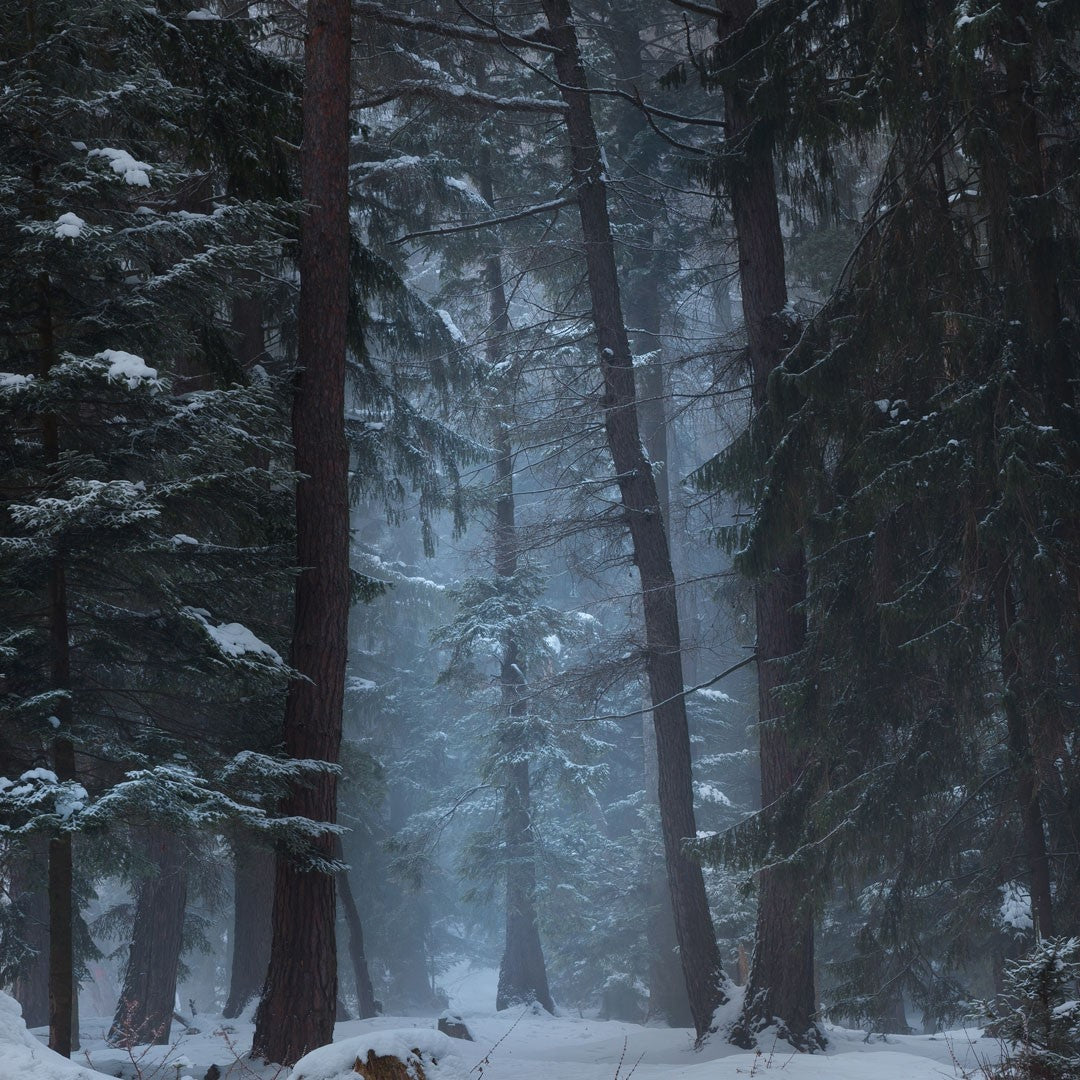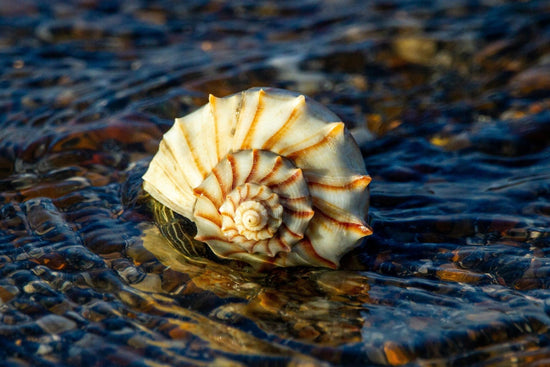Decked in snow and boughs of evergreen, the winter solstice, Yule, is swiftly swirling in. In the Nordic and Germanic regions from which this modern sabbat is derived, the dark days of winter surrounding the solstice and the Christmas holiday are some of the most dangerous of the year. Seeming to enter a sort of liminal space, these long, cold nights plunge us into a realm where monsters and other supernatural creatures roam free—and often come looking for naughty children to satisfy their ghastly appetites.
Luckily, not all of these otherworldly beings seek punitive justice during Yule. While some are simply self-interested pranksters, there are a few who are keen to bring good fortune to households and their families as the new year approaches.
Overall, Yule is a holiday heavily steeped in folklore and traditions from pre- and post-Christianization alike, and we’re keen to acquaint ourselves with a broader spectrum of the specters these mythologies have produced. So cozy into your squashiest armchair, spark up your Yule incense, and let's traverse some winter solstice tales!
Origins of the Elves

While we’re all too familiar with Santa’s elves, long at work all year making toys for the well-behaved children of the world, these Christmas creatures have roots all the way back in the tree of Yggdrasil.
In Norse mythology, Yggdrasil is a giant ash tree at the center of the world. According to Encyclopedia Britannica, Yggdrasil “connects the nine worlds, including the underworld (Niflheim), the earth (Midgard), and the realm of the gods (Asgard).” Much like a tree of life, Yggdrasil has associations with cosmological knowledge, life, and death.
Among the branches of Asgard is Alfheim, or Álfheimr in old Norse, which literally translates to “the home of the elves.”
The elves in Norse texts are of two different types. In Alfheim live the light elves, or Ljósálfar, who are radiant and powerful magical beings said to hail from the realm of light. As their place in Asgard would denote, their talents were on par with those of the gods, albeit of a lesser strength. They were able to influence earthly matters, such as the fertility of fields and production of crops, and were particularly revered for their medicinal skills—both to heal, and to afflict.
The other type of Nordic elf can be found below ground. Deep within the Earth live the Svartalfar, or Dökkálfar: the black or dark elves. While it’s difficult to know for sure, these dark elves seem largely indistinguishable from dvergr: dwarves. Intensely avoidant of the sun, these creatures and their precise dwellings remain mysterious.
What is known of them is their artistic renown. The dwarves are famous throughout the realms for their knowledge and craftsmanship of magical tools—especially having forged Thor’s legendary hammer, Mjöllnir.
Around the end of autumn comes the time for Álfablót, an annual sacrifice made to the elves. Once the crops had been reaped, a private and sacred ritual was held within the family, led by women, to thank the gods for the harvest. Álfablót was a time not only for honoring the elves, but also for ancestral veneration, particularly as the elves were believed to be able to communicate with the dead. As such, this tradition was not open to strangers who had no connection to the family.
Álfablót has typically been held during Vetrnaetr, or Winter Nights, a three-day period marking the beginning of winter. While in Scandinavia this point usually falls in late October or early November, it is a localized celebration that has crept its way into many modern heathens’ yuletide celebrations.
Tomte and the Julenisse

Known as the nisser, julenisse, tonttu, tomten, or other variations depending on the region, these gnome-like fellows are the house spirits of Scandinavia. Usually portrayed as an old man measuring under four feet with a long beard and wearing a vibrant (typically red) hat, a nisse or tomte is a staple fortune-bringer to Nordic homes and farms.
This creature is often said to have been the original farmer who lived on and cultivated the land, and was the first to have died there. Given this, a nisse or tomte is known to protect the house, its children, and its treasures, as well as to help out with farm chores. His presence generally attracts safety and luck.
These spirits have a variety of lodging spots available to them, ranging from a nearby hill or large rock, to the wood pile or food storage shed, to the barn or stable. If he is very lucky, a nisse may even take refuge inside the house, taking to the most secluded spaces therein. You may find your nisse living in the attic, or more commonly, in the dimmest corner of your stove.
Perhaps related to their suggested ghostly nature, the nisser are only ever seen by children or animals. They are particularly fond of the farm’s beasts, known even to braid the horses’ manes and tails. Be careful not to undo the nisse’s work! Benevolent as they can be, you do not want to upset a nisse.
Although generally well-natured, the nisser are temperamental folk, and may turn against you if angered. Sometimes it’s enough to abandon the house or bring in misfortune, but other times, your nisse may sneak up and bite you! This is why it’s particularly important to be on good terms with your house spirit: for their bite is poisonous, and can only be cured with a certain kind of magic.
Fortunately, it is relatively easy to keep your nisse happy. In exchange for keeping the barn clean, the home safe, and the wheat stores stocked, a nisse asks only for a bowl of porridge with an ample serving of cold butter on Christmas Eve. (If the butter is not cold enough, it may melt before your nisse finds his porridge, and he will be quite upset to think he’s received a butter-less bowl to eat!)
Considering this particular tie-in to the yuletide season, this is perhaps why the nisser became somewhat conflated with St. Nicholas—and well, they already looked the part! The nisse’s yuletide image became romanticized in the 19th century by Viktor Rydberg in his poem “Tomten.” In the 19th and 20th centuries, a house’s nisse started to leave gifts in socks or shoes on Christmas Eve, thus earning him the name Julenisse, or Christmas nisse.
Grýla, the Yule Lads, and the Jólakötturin

In Ludentarborgir, located in the hinterlands of Iceland, there lives a terrifying troll named Grýla. This yuletide witch represents the looming threat of danger living in the snowy mountains. Grisly and unforgivingly fierce, Grýla is said to come down from her cave around Yule or Christmas Eve to snatch naughty children and boil them into stew.
Somewhat more benign, or at the very least tolerable, are her sons: the thirteen Yule Lads, or Jólasveinn, who live not far from their mother in Dimmuborgir. Known by many different names across folkloric tradition, these mischievous Icelandic pranksters take the place of Santa Claus, and a different lad is said to visit children each night during the thirteen nights leading up to Christmas. Well-behaved children are rewarded with a gift in their shoe, while those who’ve misbehaved receive a raw or rotten potato.
While these lads may bear gifts, they come to town to make trouble as well. The most well-established names for each lad denote his particular flavor for mischief (though each meaning is not always so obvious). They are as follows: Sheep-Cote Clod; Gully Gawk; Stubby; Spoon Licker; Pot Scraper; Bowl Licker; Door Slammer; Skyr Gobbler; Sausage Swiper; Window Peeper; Door Sniffer; Meat Hook; and Candle Beggar.
When Christmas has passed, the Yule Lads leave one by one to make their way back to their cave in Dimmuborgir, with the last departing on January 6th. There, they will sleep in their cave until the next Yule-ing season comes.
Keeping on your best behavior is not the only way to stay safe during Iceland’s yuletide season, for another beast is prowling the streets of town at night. This would be the Jólakötturin, or Yule Cat, belonging to none other than Grýla herself. Equally vicious and hungry as she, the Yule Cat will eat anyone it sees who doesn’t wear a new piece of clothing. Be sure to don yourself with your most recently acquired garment if you’re headed out on Christmas Eve, lest you be devoured by Grýla’s famished pet!
Christmas Demons

You’ve probably heard of the all-feared Krampus, our so-called yuletide demon of justice and the namesake of our most sinister wintertime blend. This half-goat, half-demon shadows St. Nicholas on the eve of December 5th to punish naughty children throughout the Germanic countryside. If these children cannot recite their verses or have gotten into too much mischief, the Krampus is said to whisk them away in a burlap sack to his lair in the mountains.
A slightly more benevolent cousin to Krampus is Knecht Ruprecht, another darkly-clad servant or assistant to the gift-giver St. Nicholas. Knecht Ruprecht serves a near-identical function to the Krampus, though he is often of a much milder disposition.
You may have even heard of Belsnickel (popularized by TV series The Office), another supposed companion to jolly St. Nick. This character, however, is often a lone traveler, arriving within the two weeks leading up to Christmas dressed in rags and furs. Crochetty and conniving, he similarly judges whether the household’s children are deserving of candies and cakes, which he throws to the ground before them, or whether their greed and bad behavior need rewarding with a slash of birch twigs across the hands.
But have you heard of the more obscure Frau Perchta? Once a beautiful pagan goddess named Berchta, a psychopomp to infants and supernatural caregiver to women and children, this alpine Germanic character was rebranded as a horrifying hag by the Catholic Church during the process of Christianization from the sixth century on.
Frau Perchta is depicted as an ugly crone with either an iron beak or a grotesque, warty nose, along with a deformed, goose-like foot. In some versions of her tale, she even carries a sack full of screaming girls! She comes to visit when all are asleep on the twelfth night of Christmas, January 5th, to ensure the house is clean and that winter chores have been completed. These visits have earned her the nickname of "Belly-Splitter," for if she sees the house is untidy or that there are fibers left unspun, she will slice open your belly, fill you with rocks and straw, and then stitch you back up. She may also stomp on you or your unfinished work with her freakish foot before leaving.
It seems, however, there is one way to appease this frightening witch. Cook up a pot of Perchtenmilch, a fishy porridge, and leave a bowl out for Perchta on her visiting night. If she and her followers enjoy your offering, she will bless your household for the coming year.
* * *
As you’ll see from this sampling, there is a rich well of mythology from around the world surrounding the first days of winter—the stories above just scratch at the surface! We’d love to hear from you: What are some of your favorite yuletide folktales?





